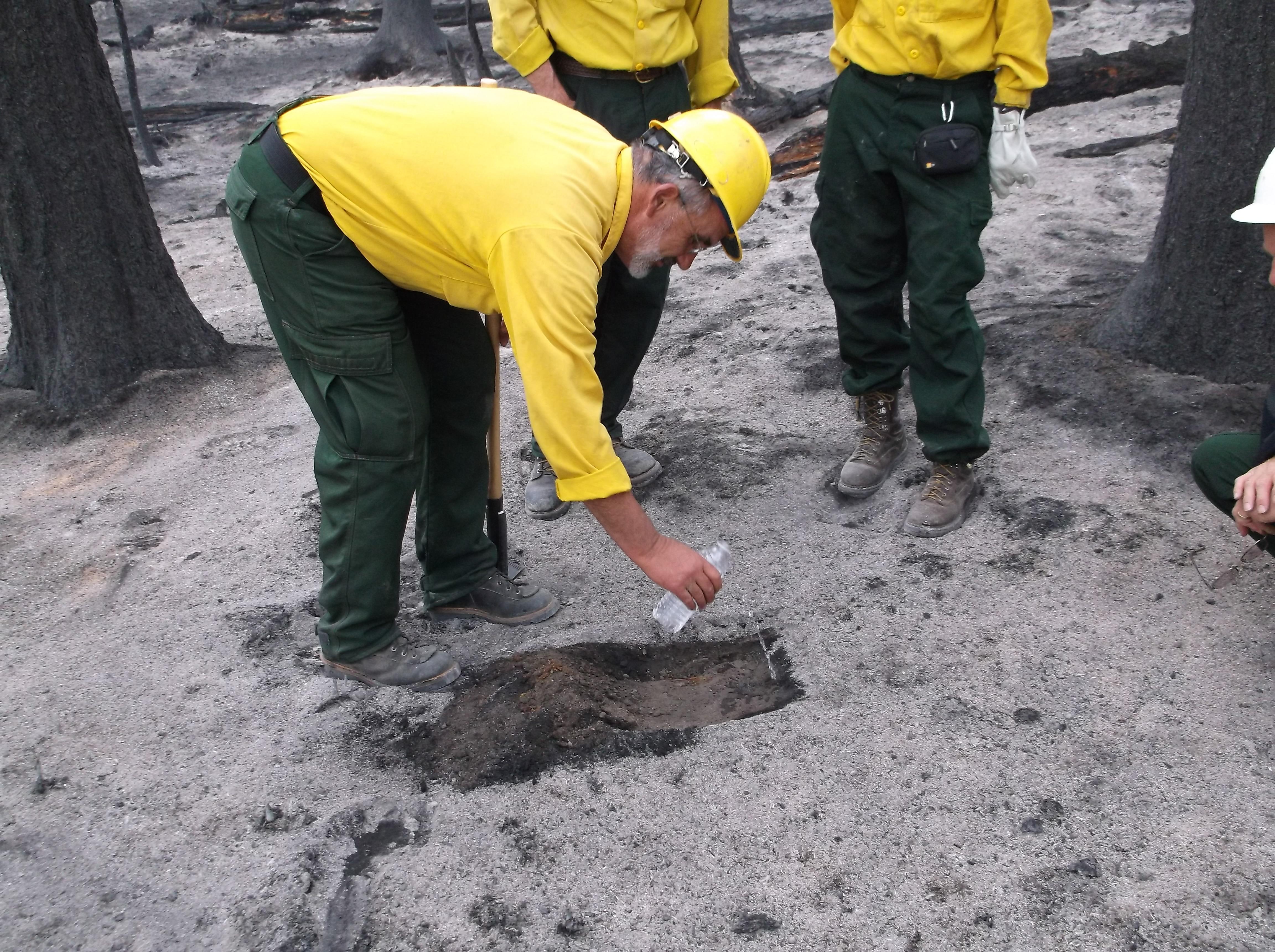 BAER Assessment Team sifts through ash from the Thompson Ridge Fire. Courtesy photo
BAER Assessment Team sifts through ash from the Thompson Ridge Fire. Courtesy photo
Staff Report
The Thompson Ridge fire was officially declared 100 percent contained last night.
Mop-up and patrol will continue.
While many wildfires cause minimal damage to the land and pose few threats to the land or people downstream, some fires result in damage that requires special efforts to reduce impacts afterwards. Loss of vegetation exposes soil to erosion; water run-off may increase and cause flooding. Soil and rock may move downstream and damage property or fill reservoirs putting community water supplies and endangered species at-risk.
The Emergency Stabilization-Burned Area Emergency Response (BAER) program is designed to address these risks through its objectives of protecting human life, safety, property, and critical natural and cultural resources on federal lands, and take immediate actions, as appropriate, to manage unacceptable risks. BAER is a program for emergency stabilization work that involves time-critical activities to be completed before the first damaging rain event to meet program objectives.
INTERAGENCY COORDINATION
Multiple agencies work with the BAER team and look at the full scope and scale of the situation to reduce the potential threats to life and property; however, BAER treatments cannot prevent all of the potential flooding or soil erosion impacts, especially after wildfires change the landscape. So it is important that the public is informed and prepared for potential increased run-off or flooding events.
One of the most effective BAER strategies is interagency coordination with local cooperators who assist affected businesses, private homes, and landowners prepare for rain storms. The Forest Service and the Natural Resources Conservation Service (NRCS) work together and coordinate with other federal and local agencies, and counties that assist private landowners in preparing for potential increased run-off or flooding.
Federal assistance to private landowners is the primary responsibility of the NRCS through the Emergency Watershed Protection (EWP) program (www.nm.nrcs.usda.gov/programs/ewp/ewp.html).
NRCS conducts damage survey reports for the private land adjacent to and downstream from the burned areas. NRCS uses these reports, along with the BAER teams assessment report, to develop recommended emergency measures for businesses and private home and landowners to reduce the impacts to their property from potential increased water and mud flows.
BAER assessment plans and implementation of the prescribed emergency response actions are a cooperating and coordinated effort between many federal agencies such as the Forest Service, NRCS, Bureau of Indian Affairs and Tribal Governments, U.S. Fish and Wildlife Service, U.S. Geological Survey, National Weather Service, and US Army Corps of Engineers, also including state, tribal governments, local agencies, and emergency management departments.
It is important that BAER coordinates its assessment and treatment implementation with all affected and interested cooperating agencies and organizations regarding other post-fire recovery and restoration efforts.

